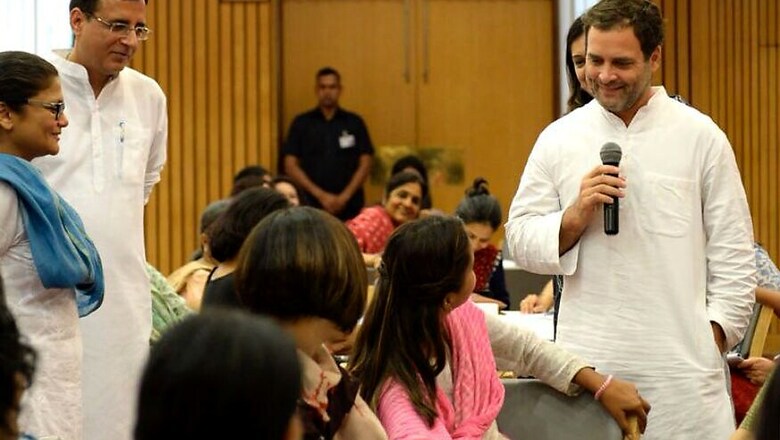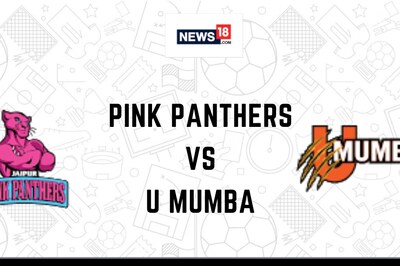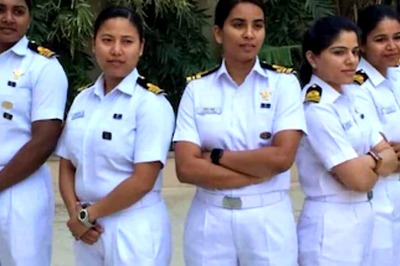
views
The road to redemption is going to be long, arduous and tortuous for the Congress and its new and re-energised party chief Rahul Gandhi. This is the message coming out from the recently revamped Congress Working Committee, the party’s highest decision making body, which met on Sunday to prepare the road map for the year-end elections in BJP-ruled Madhya Pradesh, Rajasthan and Chhattisgarh and the crucial Lok Sabha polls in 2019.
There were two major outcomes from the five-hour meeting which took place two days after Rahul’s no-holds-barred attack on Prime Minister Narendra Modi during the debate on the no-confidence motion in the Lok Sabha where he accused him of being polarising, pro-corporate and anti-poor before walking up to hug him to signal his determination to fight the BJP’s politics of hate with love, compassion and inclusiveness.
The first outcome, as anticipated, was that Rahul — who took over as party chief from his mother in December 2017 — would be the Congress’ prime ministerial face for the 2019 polls and the second, not surprisingly either, was the CWC’s decision to go for tie-ups and alliances.
Both these decisions bring their own set of problems in addition to those awaiting redressal since the party’s defeat in 2014 national elections that gave it just 44 Lok Sabha seats. The challenges include the need to regain people’s confidence, galvanise the outfit and its workers down to the booth level, nurture a social base, particularly among the farmers, poor, Dalits, minorities and other marginalised sections whose concerns Rahul has been flagging. Rahul has to recast party’s identity, improve its image, credibility and acceptance, find funds to take on the cash-rich BJP and win the battle of perception against the BJP.
The vision document that should have addressed these concerns is nowhere in sight though Sonia Gandhi as party chief had set up the Committee on Future Challenges in 2008 and twice tasked stalwart AK Antony to identify the reasons for the Congress’ defeats and suggest measures for revival.
Alliances: A Dire Necessity
Not having alliances is not an option for the party. Accordingly, Rahul has decided to set up a group to explore tie-ups. Sonia, who has been building alliances since 2003, is likely to play a role from behind the scenes while letting her son be the face of it so that it enhances his profile and acceptability in the opposition camp as a leading light and a possible PM candidate.
But there is a qualitative difference in the party’s pitch for allies from 2003 to now.
In 2003, when Sonia abandoned the party’s 'ekla chalo' (go it alone) policy to line up like-minded and secular allies against the BJP for the 2004 general elections, she was driven by her determination to see the Congress emerge as the single largest party and leader of the single largest combine so that it could can claim power at the Centre much like the Atal Bihari Vajpayee-led BJP-NDA had done in 1998 and 1999 after having had to quit in 1996 for want of numbers and allies.
In contrast, in 2018, the Congress’ quest is propelled by an existential crisis and desperation to survive. Unlike 2003, when it was still the leading opposition, in 2014, its vote share was less than 20% and with 44 seats it was barely ahead of the 37 won by Tamil Nadu’s AIADMK and 34 by West Bengal’s Trinamool Congress — a performance, contenders would exploit while talking of an alliance, opposition front or alternative government.
The Congress last got a majority — and an overwhelming one at that — in 1984 when it won 404 of the 543 Lok Sabha seats following Indira Gandhi’s assassination. In the three decades since then, its numbers have fluctuated well below the majority mark and though it formed governments in 1991, 2004 and 2009, it was a pale shadow of its former self. The national party presently rules just Punjab, Mizoram and Puducherry and shares power with the JD-S in Karnataka while the BJP has displaced it as the dominant pole of Indian politics.
Presently, alliance politics seems the only option left for the Congress to take on the BJP as it draws hope from the success of the SP-BSP combine in the 2017 bypolls or the RJD-JD(U) mahagathbandhan in Bihar in 2015.
But there is a flip side to it as well.
As the Congress scouts for tie-ups with regional parties, which are equally threatened by the BJP’s onward march, it would look for a respectable number of contestable seats, especially in states like UP, Bihar, West Bengal and Tamil Nadu where it is weak and which account for 201 Lok Sabha seats. But, as part of give-and-take, these parties would in turn demand a stake in states like Gujarat, Madhya Pradesh, Chhattisgarh or Rajasthan where the Congress is the BJP’s main challenger.
Can the Congress, which is trying to pull itself out of an abyss, afford to do so without imperiling itself?
There is the danger that if regional parties like the BSP, SP, Trinamool or the DMK do well in their states and pick up a few seats from states where they have been accommodated, they could compete with the Congress for primacy in a fluid political situation. The list of leaders waiting for such an opportunity includes, among others, BSP’s Mayawati, Trinamool’s Mamata Banerjee, NCP’s Sharad Pawar, SP’s Mulayam Singh Yadav and JD-S stalwart H D Deve Gowda who benefited from such a scenario in 1996.
Will Rahul be Accepted as PM Candidate?
Not surprisingly, the Congress sought to enhance its stakes and claim by declaring Rahul as its prime ministerial candidate for 2019. The BSP has already pitched Mayawati for the post and Mamata is planning a gathering of opposition leaders on January 19, 2019 to set up a Federal Front of which, she stressed, the Congress can be a partner but not a leader. Putting pressure on the Congress, she also said that she would contest all 42 seats in her state on her own.
The big question is whether such parties would part with seats or accept Rahul as their leader? Notwithstanding, his newfound aggression, there is scepticism if he is the right choice in a presidential style electoral face off with Modi.
To be seen as a serious contender, Rahul’s Congress will have to put up an impressive show in Rajasthan, Chhattisgarh and Madhya Pradesh. Congress will also have the daunting task of enhancing its performance in 10 states where the party has a presence, widening the lead over partners and raising the party’s current Lok Sabha tally to around 150 seats to serve the twin objectives of making a pitch for power and staving off claims from allies to lead the alternative formation.
This is perhaps why most of the 30-odd leaders who spoke at the CWC stressed that the Congress, as the principal opposition, 'naturally' take the lead to forge an anti-BJP front and Rahul, as the leader of the principal opposition, is 'naturally' the face of such an alliance which only the Congress can hold together.
The BJP is already trying to puncture the Congress’ self-belief with a three-pronged attack: warning potential partners of a political 'khichri', 'dal-dal' (muddle) and instability. The BJP also ridiculed Rahul as immature and inept and slammed him as a "merchant of hate" for tweeting about "Modi’s brutal new India", after cow vigilantes lynched a man in Alwar.
During the debate in the Lok Sabha, the prime minister charged the Congress for repeatedly betraying its partners and leaders while being noticeably soft on regional parties. Rahul, on his part, had, among other things, alleged a scam in the Rafale deal.
Battling on Three Fronts?
Rahul and the Congress have to fight Modi and the BJP-NDA on the one hand and ambitious regional outfits and potential partners who are scrambling for primacy in an anti-BJP and alternative grouping on the other. They may also have to deal with a third and a subterranean tussle as well.
The Congress chief, who constituted the CWC seven months after taking charge, retained old timers like Ahmed Patel and Motilal Vora, who have served Sonia for long to ensure continuity ahead of the forthcoming elections, to avoid old guard vs new brigade speculations.
But some like Sushilkumar Shinde and Digvijaya Singh have been dropped, raising questions whether they are a spent force or would impact Dalits in Maharashtra or Thakurs in the Hindi belt. Once considered close to Rahul, Digvijaya would be watched for the role he plays in Madhya Pradesh and Chhattisgarh, where the Congress has been out of power since 2003.
Janardan Dwivedi, who ironically was the first to pitch for Rahul’s entry into active politics, has also been sidelined, along with leaders like C P Joshi and Madhusudan Mistry, who once drew their strength from him. There are several others who find themselves out in the cold in the new dispensation. Will they wait it out or chart their own course to the party’s detriment? That would need watching.
(The author is a veteran journalist. Views expressed are personal)




















Comments
0 comment